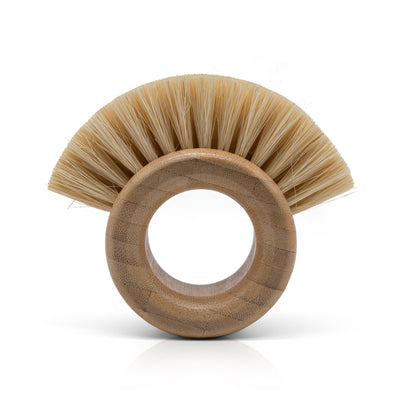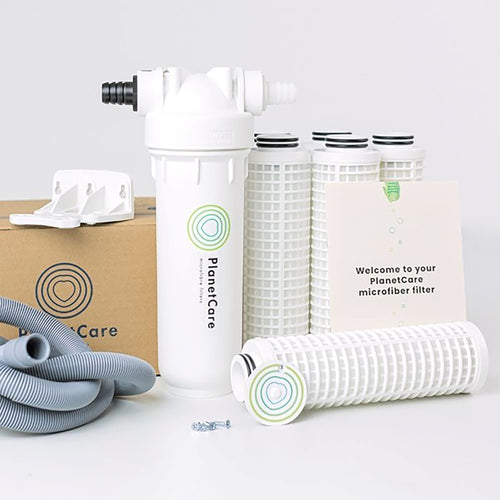It’s been tricky to miss news about energy bills over the past year or so and it’s almost certain you’ve seen articles or reports about the ongoing energy crisis. But with the price cap increasing again, now more than ever you might be thinking what is the energy crisis? What has the new price cap got to do with this, and why are my bills rising?
The energy crisis.
At the moment, the world is experiencing an energy crisis, in short there is an ongoing energy shortage around the world, due to current demand outstripping the available supply. This energy squeeze is being felt around the world.
The cause of the energy crisis is being said to be a perfect storm of events, starting with the Covid-19 pandemic. As countries began to open up again, demand for natural gas began to increase. This coupled with a particularly harsh winter that depleted reserves, poor output from renewable energy sources and the Russia-Ukraine war, the wholesale price of natural gas has skyrocketed by over 250%, which in turn has driven energy prices up all round. (Remember, natural gas is burned to create a large proportion of the worlds electricity!)
The energy price cap.

During 2019 the government introduced an energy price cap, to prevent energy companies from over-charging on their standard tariffs. The energy price cap is a ‘backstop protection’, calculated by Ofgem, it limits the entire rate including the standing charge as well as the unit price per kWh of energy.
The price cap is reviewed every three months (previously six months) and is set to move up or down depending on the wholesale price of energy. At the moment the wholesale price of energy is on the way up, with predictions warning it will peak around April 2023 before beginning to slowly return to normal. This means the price cap is predicted to increase for quite some time.
Details on the new energy price cap for October 2022
Ofgem has just announced the new energy price cap of £3,549 per year from 1st of October 2022. This is an increase of 80% from the previous price cap in April 2022 of £1,971 per year.
What can you do? Our latest advice.
The new energy price cap rise is going to be worrying for many households, with the current cost of living crises, inflation and the risk of recession, money is a topic on everyone’s mind.
With almost no energy tariffs cheaper than the regulator’s price cap at the moment, in most circumstances there is no point in trying to switch to get a better deal. The only real way to reduce your energy bills, with the rising energy prices, is to use less. Which means conserve energy in all its forms. However, just turning down your heating and sitting in the cold during the autumn and winter months or turning off the lights and sitting in the dark all day is a pretty grim prospect.
Our best tips, especially moving into winter are: save heat, save energy, save money. You can reduce the amount of energy your house uses through eliminating wasted energy (by making your home more energy efficient), or making behavioural changes to try and consume less. Doing both of these things will help to somewhat mitigate the rising energy prices. Remember, the price cap doesn’t come into effect until 1st October so the time to start implementing these measures is now to ensure you save as much money as you can.
We’ve put together some suggestions of energy saving products for all budgets and some easy behaviour changes you can start making. Adopting as many of these as you can will make a big difference to your monthly energy costs. Even if you only adopt a few, they will help to keep costs down!
The best energy saving products
We’ve compiled a list of some of the best below. Each of these products has been chosen from our range for either their efficacy, their quick payback time or how noticeable the results they provide are (or a combination of both!).
Chimney Sheep® chimney draught excluder

First off the Chimney Sheep® chimney draught excluder. Our flagship product will now save the average household around £177.00 per year (per chimney) based on the new energy price cap, which equates to 5% of the average heating bill. The payback time on fitting a Chimney Sheep® draught stopper is usually around 6 months but this winter it will be much less, even with our bigger sizes. It is incredibly easy to use, removable, ethically made, effective and long lasting. It also helps to reduce other cold draughts in your home by reducing the effects from the stack effect. Customers notice the heat saving benefits instantly!
Tapes & fillers for draught-proofing

Cracks and crevices around windows, doors and other areas of the home are a huge source of noticeably cold draughts, as well as routes for warm air to escape. We have a range of wool products available to insulate and draught proof these areas. Use our wool draught seal tape to seal the slim gaps around windows and doors, or our wool gap filler for wider gaps between the door and door frame, or for big cracks (such as those found in wonky outhouses) our useful bit of insulation will do the trick! All of our wool draught plugging products have a very low outright cost, they are fit and forget, so once in place you don’t have to do anything with them and they work instantly keeping heat in your home.
Door draught excluders
Older-style external doors are renowned for leakiness. There’s always a slim gap at the bottom, between the door and the floor. On average, leaky doors account for around 2% of household heating bills, and with bills rising this equates to quite a significant saving. Our door draught excluders are stuffed full of heavy-duty Herdwick wool which efficiently insulates and protects against the cold air. Door draught stoppers have a low outright cost, they’re easy to fit and remove, and you’ll notice a difference as soon as they’re in place. They tend to pay for themselves in under a year, plus there’s a draught excluder design for every taste!
Reflective radiator foil

It is also possible to improve the efficiency of some heating devices in your home. Radiator reflective foil is a product designed to help with this. It’s a cheap investment that is fit and forget – you simply place it behind your radiator, shiny side up and it reflects heat out into the room, rather than it being absorbed by the wall. It works instantly. It’s also incredibly discreet yet very effective. Radiator foil is one of those things that is often overlooked, but once it’s in place you notice the room heating effects quickly – this tip should hopefully leave your rooms warmer, so you can turn down the thermostat!
Vent covers
Have you ever noticed the cold breeze coming through from your external vents? Although vents are necessary for your home’s breathability they don’t have to seep so much cold air in. The DR21 fits to your vent and disrupts the cold airflow, so it doesn’t all rush in quickly (unless needed by your stove or gas fire). This noticeably reduces the cold draughts and helps your rooms stay warm. The DR21 has a very low outright cost, and generally pays for itself in less than 12 months.
We have a huge range of energy conserving products available, all tailor made and hand-picked to solve those pesky home issues that might be allowing energy to escape. Take a look at our shop to find out more about what we offer.
Homemade energy saving measures
Here at Chimney Sheep we appreciate that not everyone is in a position to invest in energy saving products, especially at this difficult time. So we urge you to only spend what you can, and tackle problems that are a priority.
At this time our advice would be to do the best you can within your means – and if this means using what you have at home to create your own energy savings devices, by all means do this! Although they aren’t quite as effective in some cases, they will absolutely still help so they are well worth doing!
Here are some thoughts of some home-made alternatives you could think about…
Use aluminium foil on your radiators
Instead of purchasing purpose built radiator foil, use any spare aluminium foil you have in your home. Fix the dull side to the wall and ensure the shiny side is facing the radiator, as this will reflect the most heat back into the room.
Make your own chimney draught excluder

You could make your own chimney draught stopper. Over the years we’ve heard of all sorts of make-shift ideas ranging from thick pillows, plastic bags full of insulation or old duvet fillings, to cardboard stoppers cut to the shape of the gap. Any draught excluder is better than none – it may not be as effective as the Chimney Sheep®, but it will do something! Make-shift options tend to leave little gaps for breathability anyway – but just in case, double check you leave a tiny gap, just to ensure your chimney can breathe a little bit!
Craft yourself a door draught excluder

It is also possible to make your own door draught stopper. It might not be as stylish as some of the crafted varieties but it will certainly do the trick! Depending on how crafty you’re feeling, you could sew some old pillowcases into shape, or commandeer an old pair of tights. You then simply stuff the casing with what you have. This could be old dry rice, stuffing from an old duvet or anything with insulative properties really. Not feeling at all crafty? You could simply fold an old blanket and lay it behind the door too.
Cling film your windows

You might have heard of this old trick: putting cling film up at your windows. This one actually works! By attaching clingfilm to your windows you are creating a very inexpensive double-glazing style barrier, which will help trap heat inside your home, and prevent the cold breeze from seeping through. If your windows are leaky, it will also act as a draught blocker, covering up the little leaky crevices.
Stuff any gaps
Most homes, especially older ones are full of sneaky cracks . Places like behind door frames, around windows and around letterboxes are common culprits. Where there’s a crack you’ll often find a cold draught so we’d advise using what you have around the home to cover or plug existing cracks if possible. You could use small strips of old fabric to line the cracks around windows, stuff larger crevices with old stuffing from duvets, or use a tape to seal up slim cracks around letterboxes.
Energy saving behaviour changes
It is also possible to reduce energy use through changes in behaviour. By using different settings (lower or eco settings) or reducing the time you use appliances for, you will use less energy, which will contribute to lowering your energy bills.
Ideas you could try are…
Change up your laundry routine
Make your laundry routine more efficient by using eco settings on the washing machine, washing less frequently and reducing dryer usage. Making your laundry routine more efficient is an easy way to reduce your energy consumption and save money. In fact we have a whole blog on how to eco-ify your laundry .
Use less hot water!
Heating water, especially with older inefficient systems uses a lot of electricity (or gas). Using less hot water could help reduce your energy bills. Simple saves you can make include: taking slightly colder, shorter showers. Only turn the water heating system on when you need the hot water, don’t leave it running all day.
Be vigilant

Remember all those things your parents used to nag you about when you were a child? ”Turn the lights of when you leave the room! Close the curtains at night! Don’t fill the kettle full when you boil it!” As it turns out, doing these little ‘nags’ collectively could help reduce rising energy prices. Some to note are: Turn electrical devices off when you’re not using them (not stand-by), keep heat in by closing curtains, windows and doors, as well as turning your thermostat down a degree or two, and dressing warmer in the house instead of switching the heating on.
Where can I find help with the rising energy prices?
We want to encourage anyone that is struggling, or particularly worried about the rising energy prices or the new energy price cap to access reliable resources and seek expert advice.
We would advise you take a look at or contact the following organisations for tailored help and advice:
Each of these organisations offer up-to-date, evidenced advice and are available to contact at anytime and should be able to provide you with information tailored to your situation – they may also be able to offer you guidance and help direct you to further resources that are available to aid with the rising energy prices.
We’re also available for a chat between 9am-5pm Monday – Friday! We are experts in conserving energy and providing home draught proofing advice. Our team is incredibly friendly and are able to work with all different kinds of budget. We’ll provide you with honest, tailored advice, free of judgement, to help you meet your energy savings goals.





















